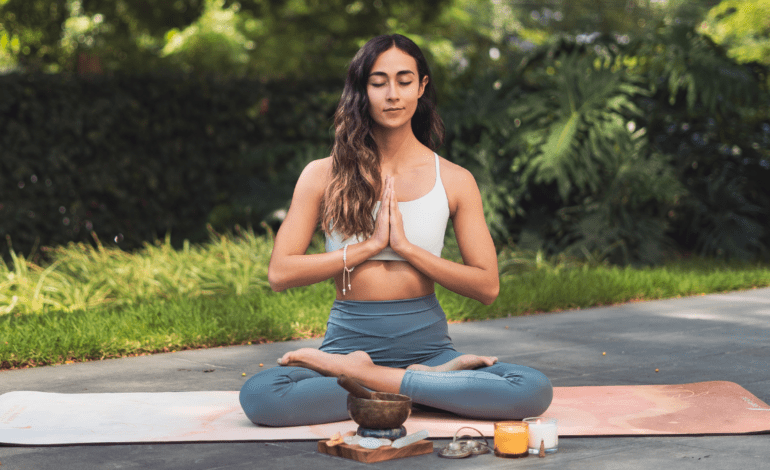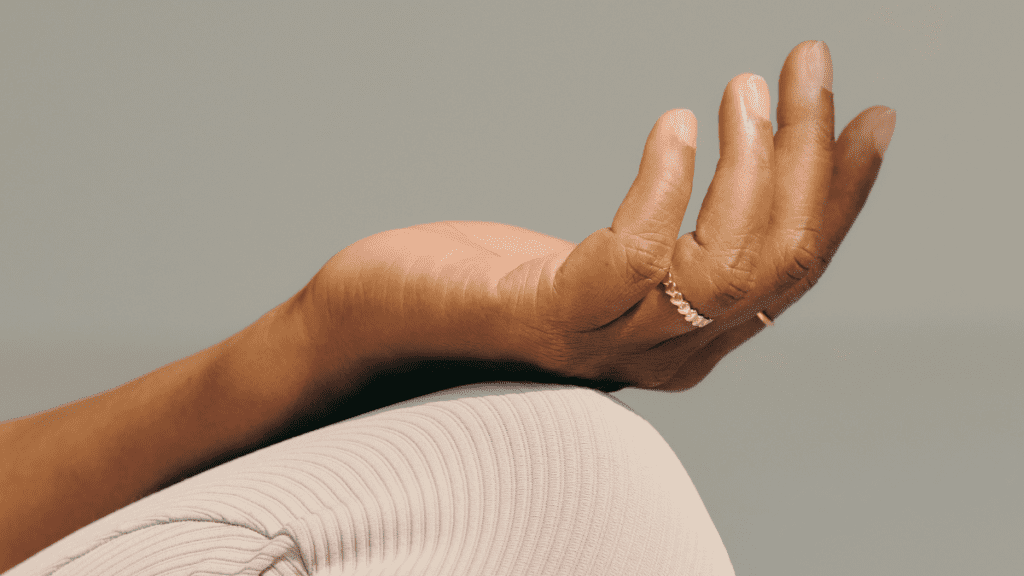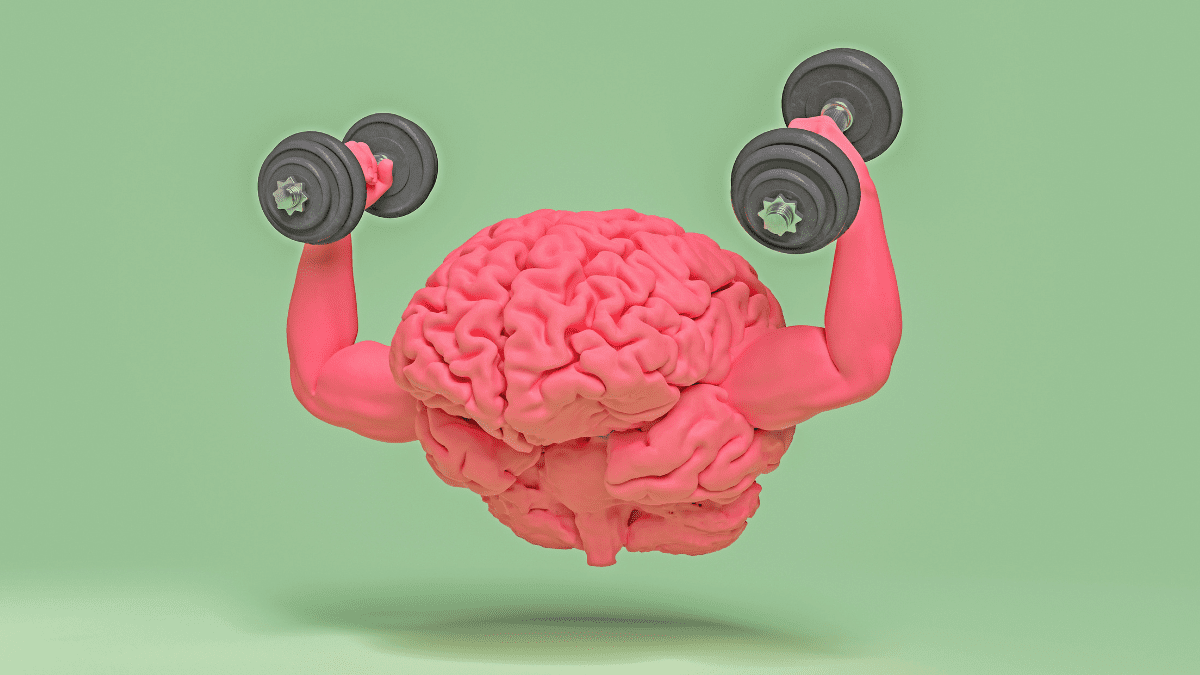Meditation in Stroke Recovery: Wake Up Your Brain Now
A stroke affects mobility, speech, and cognition, requiring intensive therapy. Research suggests meditation in stroke recovery enhances healing, supporting physical rehabilitation and emotional well-being for a better recovery process.

A stroke is a life-altering event that can affect mobility, speech, and cognitive function. Moreover, recovery often requires intensive therapy, including physical rehabilitation, speech exercises, and lifestyle adjustments. Furthermore, a growing body of research suggests that meditation in stroke recovery can significantly enhance the healing process—both physically and emotionally.
In addition, meditation is a practice that promotes relaxation, mindfulness, and awareness. For stroke survivors, it offers a non-invasive, accessible tool to support brain healing, reduce stress, and improve overall well-being. Notably, studies have shown that meditation can enhance neuroplasticity, the brain’s ability to reorganize itself by forming new neural connections. Consequently, even after a stroke, the brain has the potential to rewire and regain lost functions.
Furthermore, beyond brain recovery, meditation also addresses the emotional toll of a stroke. Many survivors experience anxiety, depression, or frustration during their recovery journey. Therefore, meditation fosters emotional resilience by helping individuals manage stress and cultivate a more positive mindset.
In the following sections, we will explore how meditation can aid in stroke recovery, discuss the best techniques for survivors, and outline practical ways to incorporate meditation into daily life.
How Meditation Supports Stroke Recovery
Meditation plays a crucial role in the recovery process by enhancing brain function, reducing stress, and improving overall well-being. Here’s how it benefits stroke survivors:
1. Brain Plasticity & Healing
The brain has an incredible ability to adapt and heal after injury, a concept known as neuroplasticity. Meditation stimulates the brain’s ability to rewire itself by:
- Strengthening neural connections
- Enhancing blood flow to the brain
- Supporting cognitive and motor function rehabilitation
Research suggests that mindfulness meditation increases gray matter density in areas responsible for memory, learning, and emotion regulation—key aspects of post-stroke recovery.
2. Stress Reduction & Emotional Balance
A stroke can be a traumatic experience, often leading to heightened stress and anxiety. Meditation helps lower cortisol levels, the body’s primary stress hormone, leading to:
- Reduced anxiety and depression
- Improved emotional resilience
- Better sleep quality, which is essential for brain healing
Mindfulness meditation, in particular, encourages survivors to focus on the present moment, reducing worries about the past or future.
3. Improved Focus & Cognitive Function
Many stroke survivors struggle with cognitive impairments, such as memory loss and difficulty concentrating. Meditation improves cognitive abilities by:
- Enhancing attention span and mental clarity
- Strengthening working memory
- Improving problem-solving skills
Studies show that regular meditation activates the prefrontal cortex, the area responsible for decision-making and focus, which is often affected after a stroke.
4. Physical Recovery & Motor Skills Improvement
Meditation isn’t just for the mind—it also benefits physical recovery. Some studies suggest that stroke survivors who practice meditation experience:
- Better control over movement and coordination
- Reduced muscle stiffness and tension
- Improved motor rehabilitation outcomes
By promoting relaxation and increasing awareness of bodily sensations, meditation helps survivors reconnect with their bodies and regain control over their movements.
In the next section, we’ll explore specific meditation techniques that are most effective for stroke recovery.
Best Meditation Techniques
Not all meditation practices are the same, and for stroke survivors, certain techniques can be more beneficial than others. Here are the most effective meditation methods to support stroke recovery:
1. Mindfulness Meditation in Stroke Recovery
Mindfulness meditation focuses on being fully present in the moment without judgment. It helps stroke survivors by:
- Reducing anxiety and stress
- Improving focus and cognitive function
- Encouraging self-awareness and emotional balance
How to Practice:
- Find a quiet space and sit comfortably.
- Close your eyes and focus on your breath.
- Observe your thoughts without trying to control them.
- If your mind wanders, gently bring your attention back to your breath.
- Start with 5–10 minutes daily and gradually increase.
2. Guided Meditation
Guided meditation is helpful for those who find it challenging to meditate alone. It involves listening to an instructor, either through an app, video, or audio recording, who leads the meditation session.
Benefits for Stroke Recovery:
- Provides structure for beginners
- Enhances relaxation and reduces frustration
- Supports visualization techniques for healing
How to Practice:
- Use meditation apps like Headspace or Calm.
- Listen to guided meditations focused on healing and recovery.
- Follow along with a meditation coach or therapist.
3. Loving-Kindness Meditation (Metta Meditation)
This practice focuses on cultivating self-compassion, gratitude, and kindness towards oneself and others—important for stroke survivors dealing with frustration or depression.
Benefits:
- Boosts emotional well-being
- Reduces feelings of isolation
- Encourages a positive outlook on recovery
How to Practice:
- Close your eyes and take deep breaths.
- Silently repeat phrases like: “May I be healthy, may I be strong, may I be at peace.”
- Extend these wishes to loved ones and even to people you don’t know.
- Focus on feelings of warmth and kindness.
4. Breathwork & Body Scan Meditation
This technique helps stroke survivors reconnect with their bodies, which is essential for regaining mobility and control.
Benefits:
- Increases relaxation and pain management
- Improves body awareness and control
- Helps reduce muscle tension and stiffness
How to Practice:
- Lie down or sit in a comfortable position.
- Close your eyes and take slow, deep breaths.
- Bring awareness to different parts of your body, starting from your feet and moving upward.
- Notice any tension and consciously relax those areas.
Each of these techniques provides unique benefits, and stroke survivors can experiment to find what works best for them. In the next section, we’ll explore the scientific studies that support meditation’s role in stroke recovery.

Scientific Studies & Evidence on Meditation in Stroke Recovery
The benefits of meditation in stroke recovery are not just anecdotal—scientific research supports its effectiveness in improving cognitive function, emotional well-being, and physical rehabilitation. Below are some key studies and findings:
1. Meditation in Stroke Recovery Enhances Neuroplasticity
A study published in NeuroImage found that mindfulness meditation increases gray matter density in brain regions associated with learning, memory, and emotional regulation. For stroke survivors, this suggests that meditation may help the brain rewire itself, potentially aiding in cognitive and motor function recovery.
2. Reduces Stress and Anxiety in Stroke Patients
A clinical trial in the Journal of Alternative and Complementary Medicine reported that stroke survivors who practiced mindfulness meditation experienced significant reductions in anxiety, depression, and stress-related symptoms. The study concluded that meditation can serve as a valuable tool for emotional recovery post-stroke.
3. Improves Cognitive and Attention Skills
A 2021 study published in Frontiers in Psychology found that meditation enhances cognitive abilities, including memory, attention, and problem-solving. Stroke patients who engaged in regular meditation showed improved mental clarity and better decision-making skills over time.
4. Supports Motor Recovery and Movement Rehabilitation
Research in Neurorehabilitation and Neural Repair explored the role of mindfulness meditation in motor recovery. Participants who combined meditation with physical therapy demonstrated better motor function improvement than those who only participated in standard rehabilitation. Meditation was believed to help patients reconnect with their bodies and improve movement awareness.
5. Lowers Blood Pressure and Supports Heart Health
High blood pressure is a major risk factor for strokes, and maintaining healthy blood pressure levels is essential for recovery and prevention. A study by the American Heart Association found that meditation helps lower blood pressure by promoting relaxation and reducing stress-related hormones.
6. Real-Life Testimonials from Stroke Survivors
Many stroke survivors have reported personal success with meditation:
- Some found that breath-focused meditation helped them manage post-stroke anxiety.
- Others credited guided meditation with improving their sleep and reducing frustration during rehabilitation.
- Many noted an overall improvement in mental clarity, motivation, and emotional resilience.
The growing body of evidence suggests that meditation can be a powerful, non-invasive tool in stroke rehabilitation. In the next section, we’ll discuss practical ways to incorporate meditation into a daily stroke recovery routine.
How to Incorporate Meditation in Stroke Recovery
Making meditation a daily habit can significantly enhance the stroke recovery process. Here are some practical steps for stroke survivors to integrate meditation into their rehabilitation routine:
1. Start with Short Sessions
Many stroke survivors may find it difficult to focus for long periods. Instead of forcing lengthy sessions, start small and gradually increase the duration.
- Begin with 5-minute sessions and slowly work up to 15–30 minutes.
- Focus on simple techniques like deep breathing or guided meditation.
- Set a reminder to practice meditation at the same time every day.
2. Use Meditation Apps and Online Resources
Guided meditation can be a helpful tool, especially for beginners. There are several apps designed to make meditation more accessible.
- Headspace & Calm – Offer guided meditations tailored for stress relief and relaxation.
- Insight Timer – Free meditation sessions with various instructors.
- YouTube & Podcasts – Free guided meditations specifically designed for stroke recovery.
3. Meditate in a Comfortable Position
Some stroke survivors may have mobility challenges, making it difficult to sit in traditional meditation postures. Adjust your position for comfort:
- Seated meditation: Sit in a chair with feet flat on the floor.
- Lying-down meditation: A good option for those with mobility restrictions.
- Supported posture: Use cushions or recliners for added support.
4. Combine Meditation with Physical Therapy
Meditation can enhance physical therapy by improving focus and awareness of movement.
- Practice body scan meditation before therapy to improve connection with the body.
- Use mindful breathing while doing physical therapy exercises to reduce stress.
- Meditate after therapy sessions to promote relaxation and muscle recovery.
5. Join a Support Group or Seek Professional Guidance
Support from others can help stroke survivors stay motivated. Consider:
- Joining meditation groups (either in-person or virtual).
- Consulting with a therapist who specializes in mindfulness-based cognitive therapy (MBCT).
- Participating in stroke recovery programs that incorporate meditation practices.
6. Be Patient and Kind to Yourself
Recovery after a stroke takes time, and progress may be slow. Meditation is not about achieving perfection but about being present in the moment.
- Don’t judge your progress. Every meditation session is valuable.
- Acknowledge small improvements. Even a few moments of mindfulness can help.
- Stay consistent. The benefits of meditation grow over time.
By following these steps, stroke survivors can make meditation a meaningful part of their recovery. In the next section, we’ll explore additional holistic practices that complement meditation.
Additional Holistic Practices to Support Meditation in Stroke Recovery
While meditation is a powerful tool, combining it with other holistic practices can enhance stroke recovery even further. Here are some complementary approaches that work well alongside meditation:
1. Gentle Yoga and Movement Therapy
Yoga and light movement exercises help improve mobility, flexibility, and coordination—important factors in stroke rehabilitation.
- Chair yoga: Ideal for those with limited mobility.
- Tai Chi: A slow, meditative movement practice that improves balance and reduces stress.
- Stretching routines: Helps relieve muscle stiffness and promotes circulation.
2. Nutrition for Brain Health
A balanced diet plays a crucial role in stroke recovery and brain function. Consider incorporating:
- Omega-3 fatty acids (found in fish, flaxseeds, and walnuts) to support brain regeneration.
- Antioxidant-rich foods (like berries and leafy greens) to reduce inflammation.
- Hydration: Drinking enough water is essential for cognitive function and overall well-being.
3. Acupuncture and Massage Therapy
Alternative therapies like acupuncture and massage can aid in stroke recovery by:
- Improving circulation and muscle relaxation.
- Reducing post-stroke pain and stiffness.
- Enhancing overall well-being and emotional balance.
4. Sound Healing and Music Therapy
Listening to calming sounds or music can improve mood and brain function.
- Binaural beats and meditative music enhance relaxation.
- Playing an instrument or singing may help improve motor function and coordination.
- Music therapy programs have been shown to aid in speech and cognitive recovery.
5. Sleep Optimization
Rest is essential for brain healing. Meditation before bedtime can improve sleep quality, but additional strategies include:
- Creating a relaxing nighttime routine (dim lighting, deep breathing, and calming sounds).
- Avoiding screens and stimulants before bed.
- Practicing progressive muscle relaxation to reduce tension.
6. Journaling and Emotional Expression
Writing down thoughts and emotions can help stroke survivors process their experiences and track their recovery progress.
- Gratitude journaling shifts focus to positive improvements.
- Expressive writing helps manage emotional distress.
- Drawing or creative activities provide an alternative form of self-expression.
Combining these holistic practices with meditation can lead to a more comprehensive and effective recovery process. In the next section, we’ll wrap up with a summary and frequently asked questions.
Meditation in Stroke Recovery — Conclusion
Meditation in stroke recovery is a powerful tool that can support stroke recovery by promoting neuroplasticity, reducing stress, enhancing cognitive function, and improving emotional resilience. Various meditation techniques, such as mindfulness, guided meditation, loving-kindness, and breathwork, offer significant benefits for stroke survivors.
Incorporating meditation into daily routines, along with gentle movement, proper nutrition, sleep optimization, and other holistic practices, can accelerate the healing process and improve overall well-being. The key is consistency, patience, and self-compassion throughout the journey.
Meditation in Stroke Recovery — Frequently Asked Questions (FAQs)
1. Can meditation replace physical therapy for stroke recovery?
No. Meditation in stroke recovery is a complementary tool that supports physical and cognitive rehabilitation but should not replace professional medical or physical therapy treatments. It works best alongside traditional stroke recovery programs.
2. How soon after a stroke can someone start meditating?
Meditation can be introduced as soon as a doctor approves it. Initially, short and guided sessions can help survivors ease into the practice without overwhelming themselves.
3. What is the best meditation technique for stroke survivors?
The best technique depends on individual needs. However:
- Mindfulness meditation helps reduce stress and improve focus.
- Guided meditation is great for beginners.
- Body scan meditation enhances body awareness and relaxation.
- Loving-kindness meditation supports emotional healing.
4. Can meditation help with speech recovery after a stroke?
Yes. Meditation in stroke recovery encourages mind-body awareness, which can improve focus, patience, and stress management—factors that support speech therapy and communication skills.
5. Is it normal to feel frustrated or restless while meditating?
Yes, especially for beginners. It’s normal to experience wandering thoughts or impatience, but with consistent practice, meditation becomes easier and more effective over time.
6. Can meditation prevent future strokes?
While meditation alone cannot guarantee stroke prevention, it helps by:
- Lowering blood pressure
- Reducing stress and inflammation
- Supporting healthy lifestyle habits
7. How can caregivers help stroke survivors with meditation?
Caregivers can:
- Play guided meditation audio for the survivor.
- Practice meditation together to create a supportive environment.
- Encourage short, gentle meditation sessions without pressure.
By integrating meditation into their routine, stroke survivors can experience profound benefits for both their mind and body. The journey may be slow, but every small step counts toward recovery and a better quality of life.







